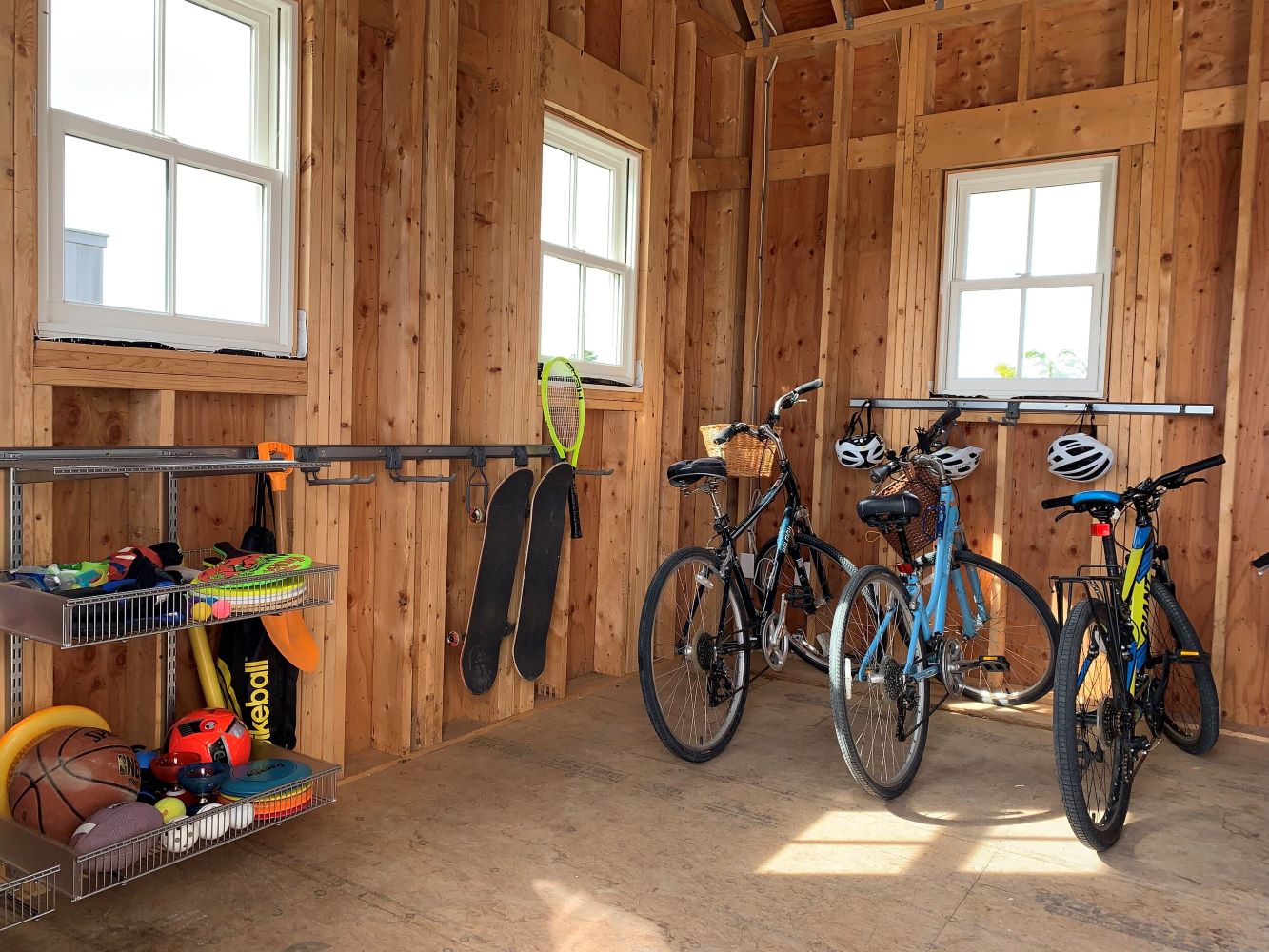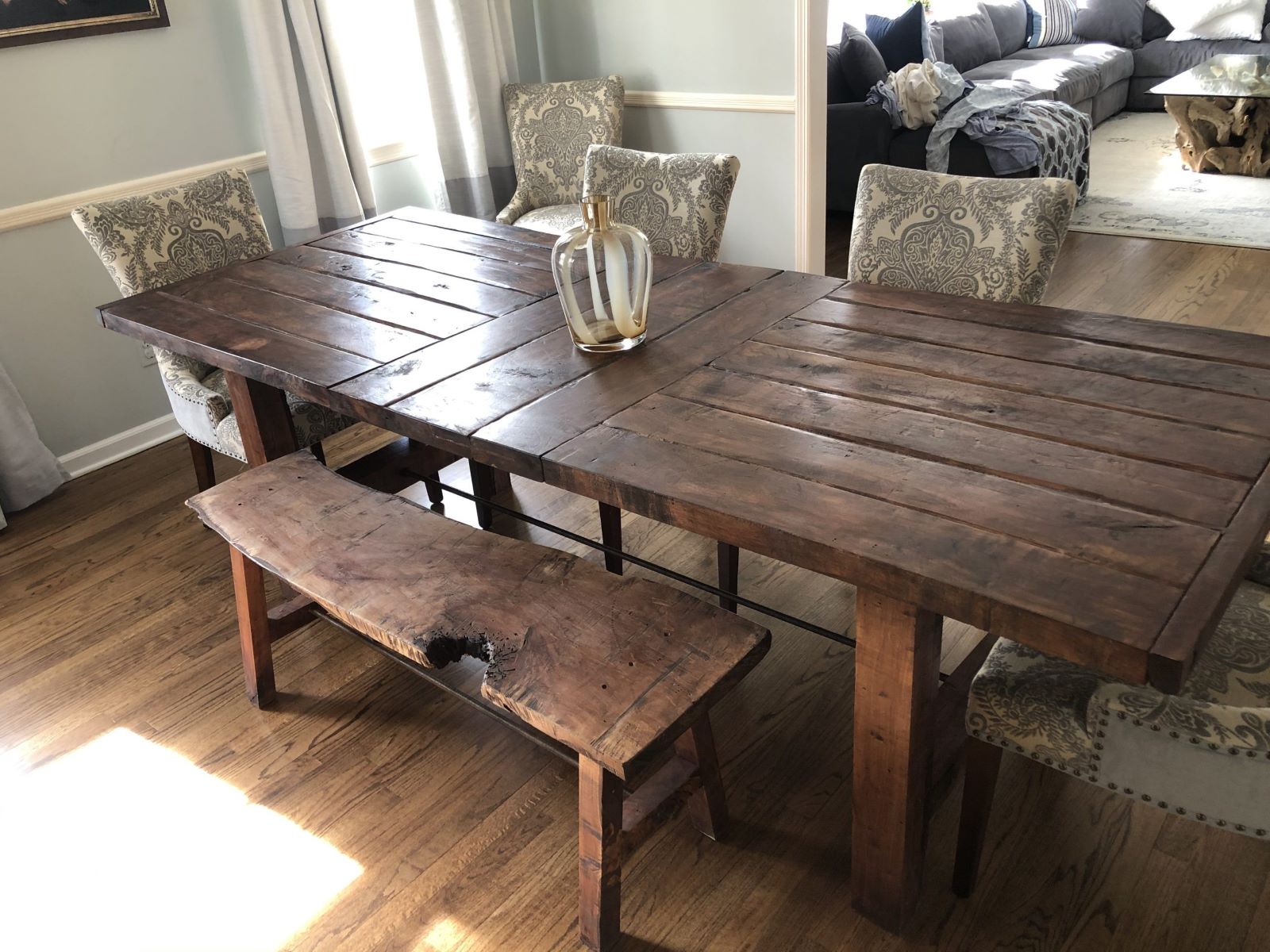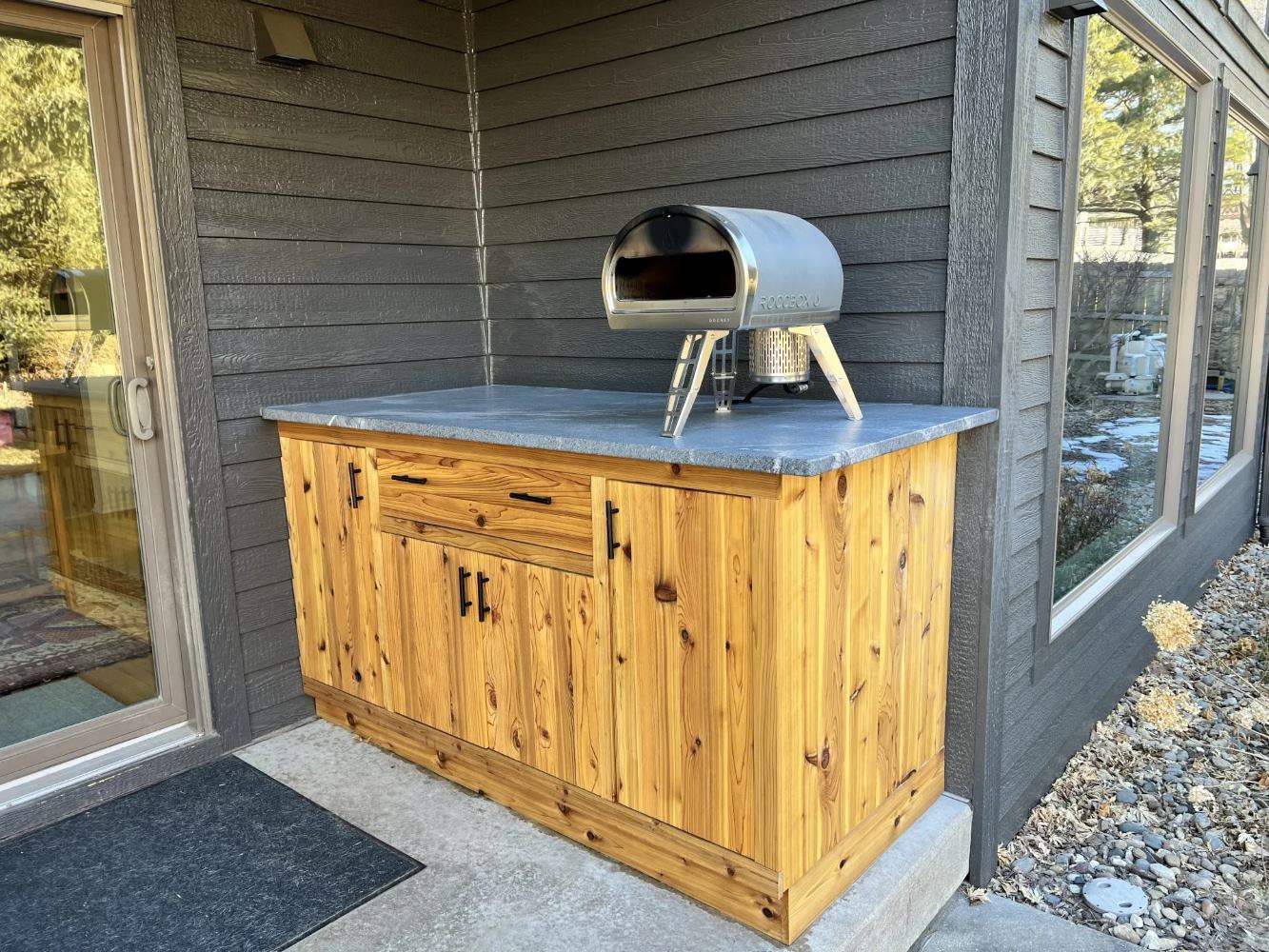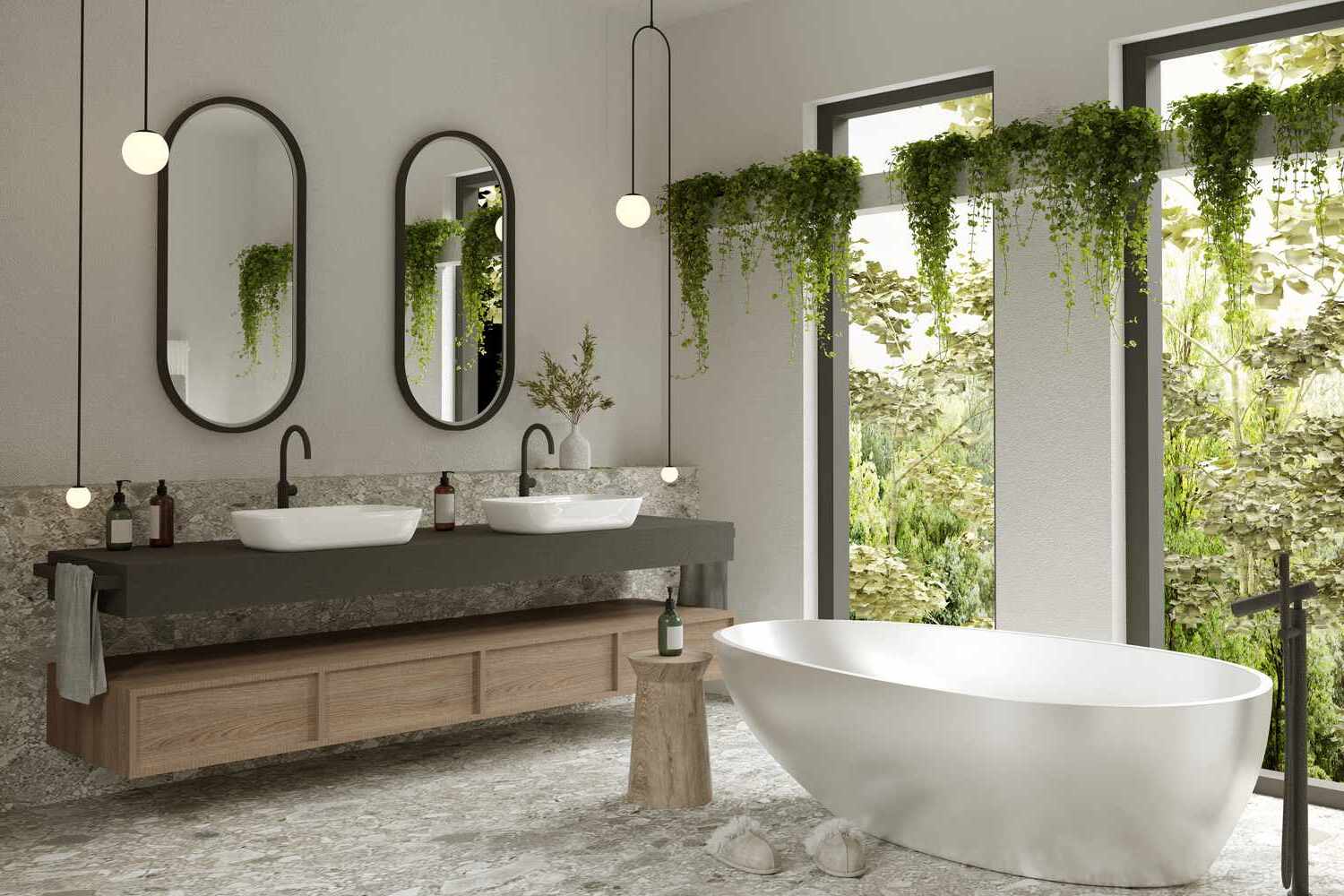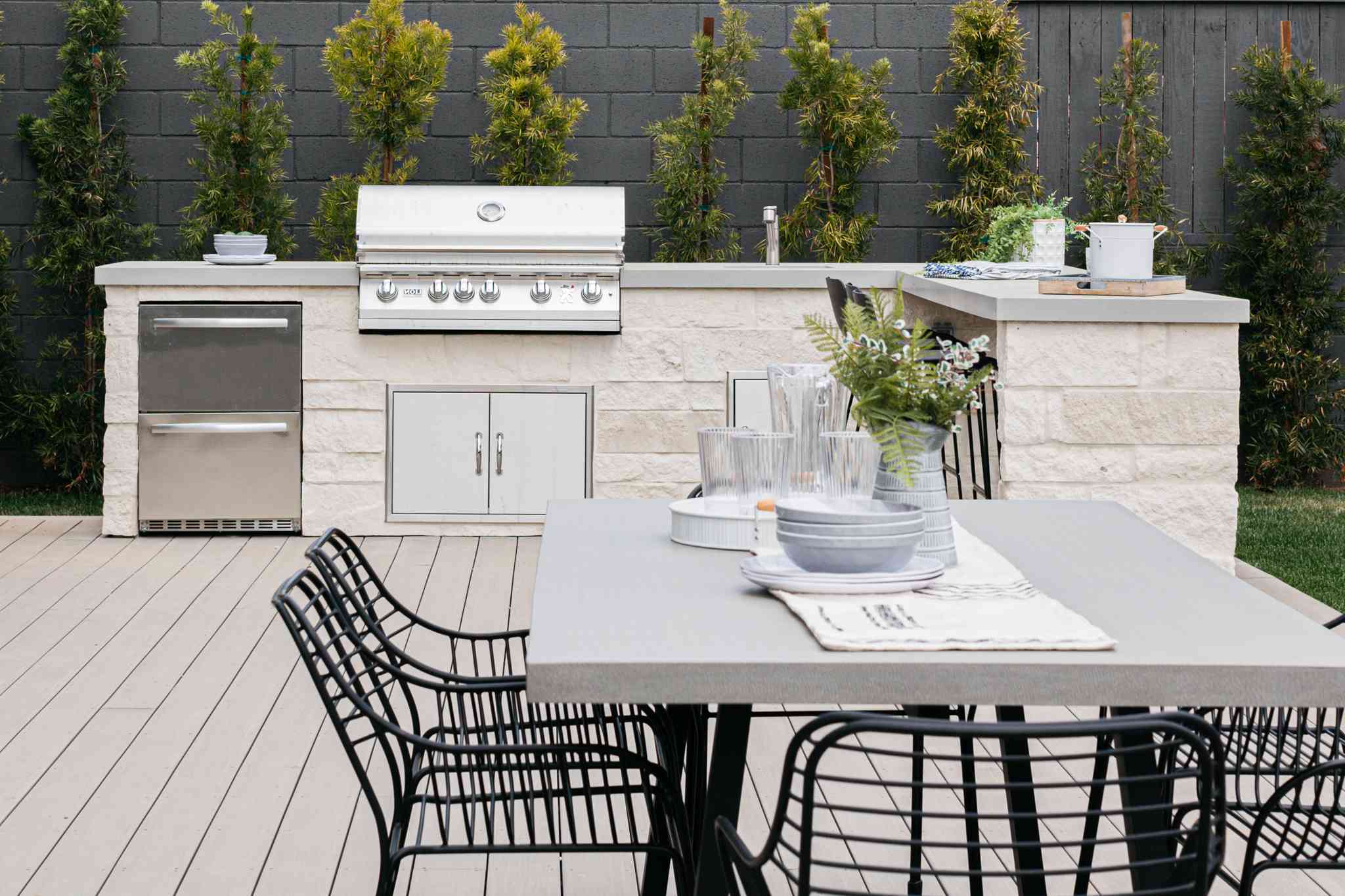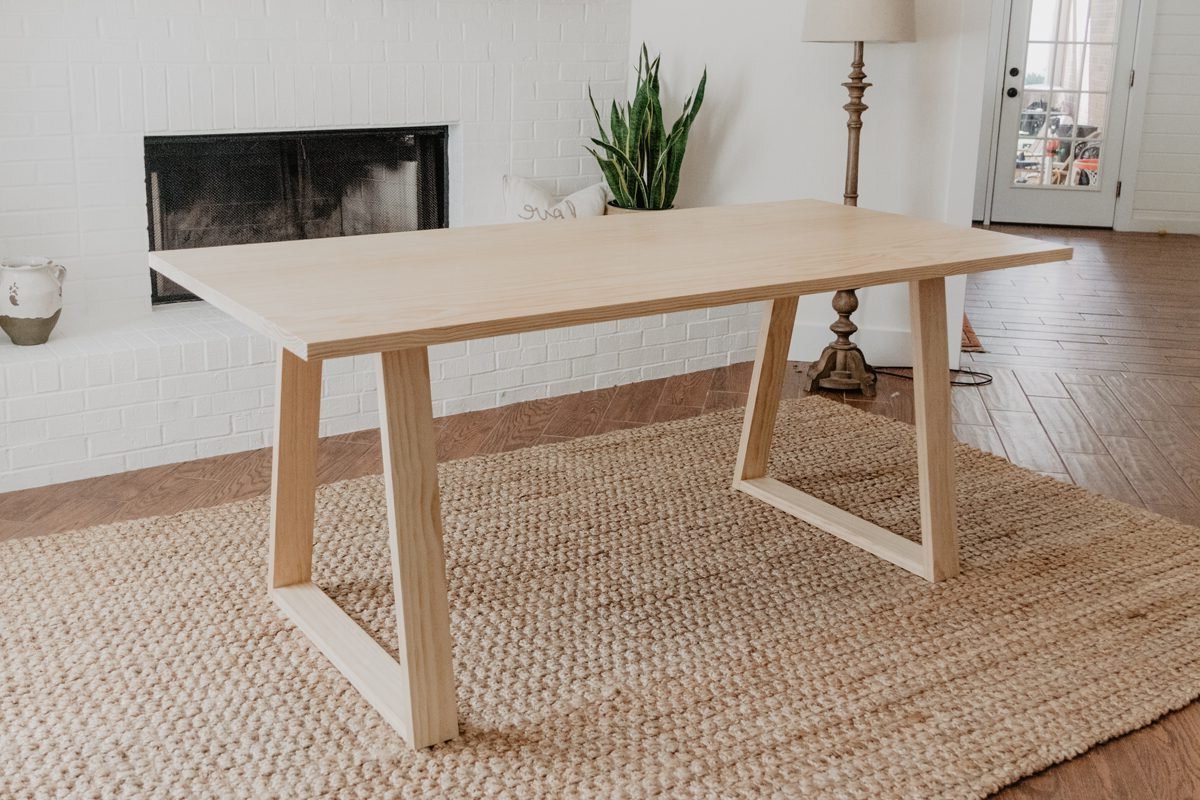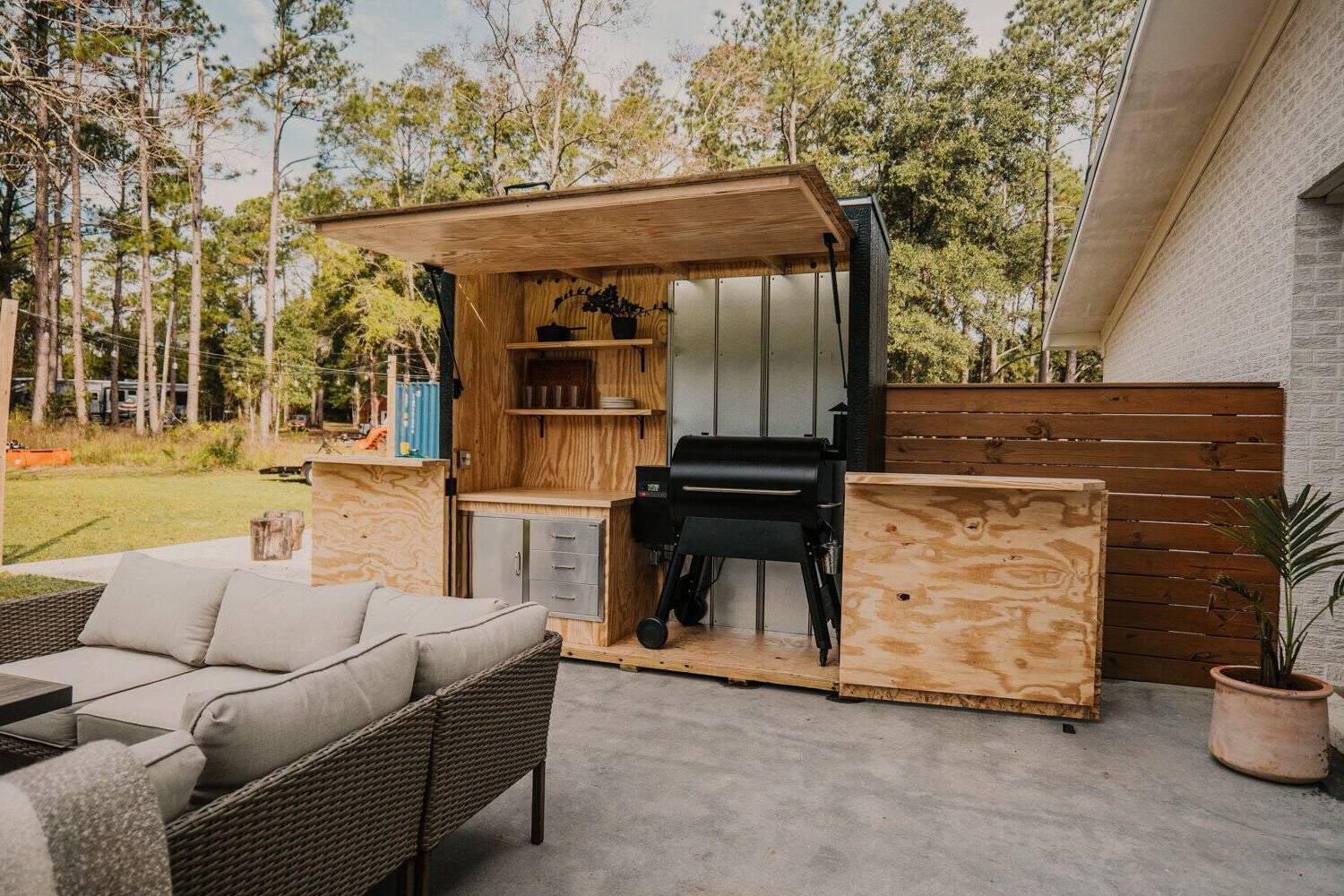Home>Create & Decorate>DIY & Crafts>Easy DIY Picnic Table Plans For Outdoor Gatherings
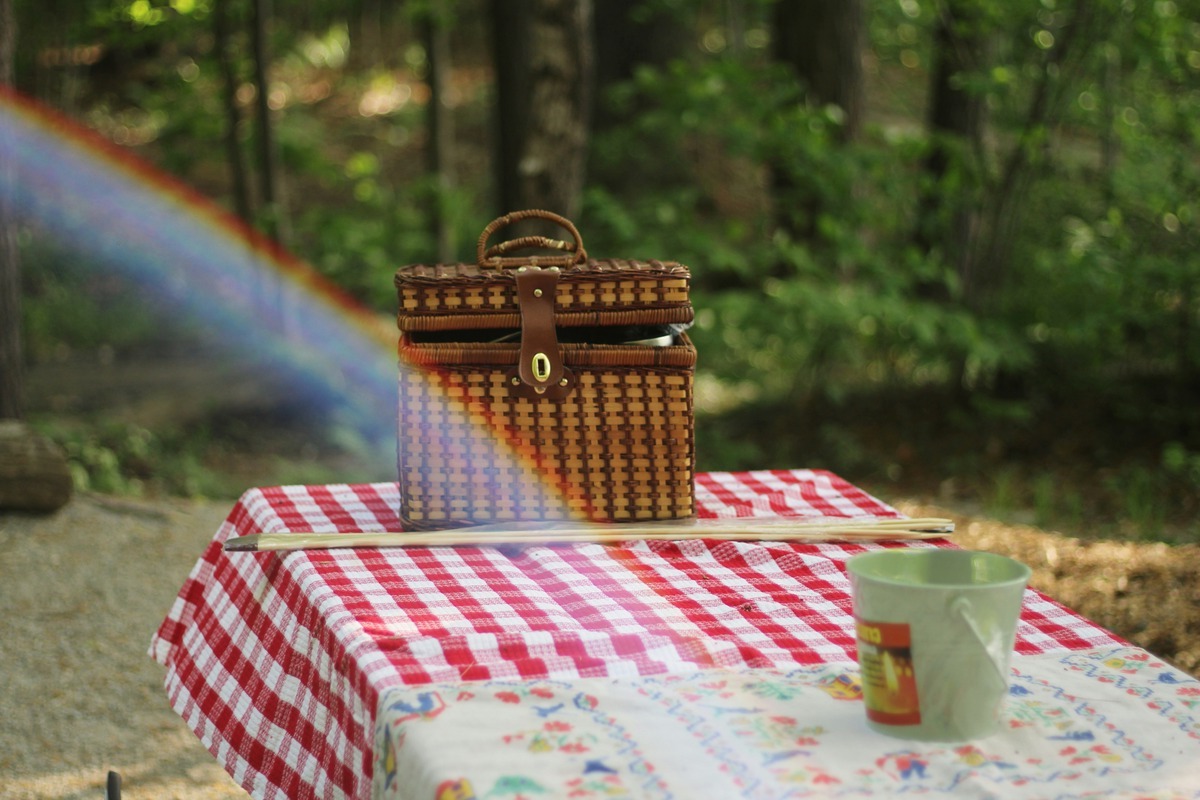

DIY & Crafts
Easy DIY Picnic Table Plans For Outdoor Gatherings
Published: February 28, 2024

Senior Editor in Create & Decorate, Kathryn combines traditional craftsmanship with contemporary trends. Her background in textile design and commitment to sustainable crafts inspire both content and community.
Discover easy DIY picnic table plans for your outdoor gatherings. Get creative with DIY & Crafts and build the perfect picnic table for your next event.
(Many of the links in this article redirect to a specific reviewed product. Your purchase of these products through affiliate links helps to generate commission for Twigandthistle.com, at no extra cost. Learn more)
Introduction
Are you ready to elevate your outdoor gatherings with a charming and functional picnic table? Building your own picnic table can be a rewarding and budget-friendly DIY project that brings family and friends together for memorable moments in the great outdoors. Whether it's for enjoying a leisurely weekend brunch, hosting a lively barbecue, or simply savoring the beauty of nature, a well-crafted picnic table provides the perfect setting for creating lasting memories.
In this comprehensive guide, we will walk you through the step-by-step process of constructing a classic picnic table that exudes rustic charm and durability. With a few basic tools, quality materials, and a dash of creativity, you can bring this timeless piece of outdoor furniture to life in your own backyard.
By embarking on this DIY adventure, you not only have the opportunity to customize the design and dimensions of the picnic table to suit your space and preferences, but you also get to bask in the satisfaction of creating something with your own hands. Whether you're a seasoned woodworking enthusiast or a novice looking to hone your skills, this project is well within your reach and promises a sense of accomplishment upon completion.
So, roll up your sleeves, gather your materials, and let's dive into the world of DIY picnic table construction. With a bit of patience and a sprinkle of creativity, you'll soon be relishing the fruits of your labor as you gather around your newly crafted picnic table with your loved ones. Let's get started!
Read more: DIY Outdoor Concrete Countertops
Materials and Tools Needed
Before diving into the construction process, it's essential to gather all the necessary materials and tools to ensure a smooth and efficient building experience. Here's a comprehensive list of what you'll need:
Materials:
- Pressure-treated lumber: Opt for high-quality, weather-resistant lumber such as cedar, redwood, or treated pine. The amount will depend on the dimensions of the picnic table you plan to build.
- Wood screws: Select corrosion-resistant screws designed for outdoor use to ensure the longevity of your picnic table.
- Wood glue: A reliable wood adhesive will reinforce the joints and enhance the overall sturdiness of the table.
- Wood finish or sealant: Choose a finish that provides protection against the elements, such as a weatherproof stain or sealant, to safeguard the wood from moisture and UV damage.
- Sandpaper: Invest in coarse and fine-grit sandpaper to smooth the wood surfaces and eliminate any rough edges.
- Optional: Umbrella hole plug, if you wish to add an umbrella to your picnic table for shade on sunny days.
Tools:
- Measuring tape: Accurate measurements are crucial for ensuring precision and symmetry in your picnic table construction.
- Circular saw or miter saw: A reliable saw for cutting the lumber to the desired lengths and angles.
- Power drill: Essential for drilling pilot holes and driving screws into the wood.
- Clamps: These will come in handy for securing the wood pieces in place during assembly.
- Speed square: Ideal for ensuring precise 90-degree angles during the cutting and assembly process.
- Wood chisel: Useful for fine-tuning joints and ensuring a snug fit during assembly.
- Paintbrushes or applicators: If you plan to apply a wood finish or sealant, quality brushes or applicators will facilitate the process.
By ensuring you have all the necessary materials and tools at your disposal, you'll be well-prepared to embark on your DIY picnic table project with confidence and ease. With these essentials in hand, you're ready to move on to the exciting process of bringing your picnic table to life.
Step 1: Cutting the Wood
The initial phase of crafting your own picnic table involves precision and careful execution in cutting the wood to the required dimensions. This step lays the foundation for the structural integrity and aesthetic appeal of the final product. Here's a detailed breakdown of the wood-cutting process:
Read more: How to Build a DIY Dining Table
1.1 Measuring and Marking
Begin by measuring and marking the lumber according to the specific dimensions of the picnic table and benches. Utilize a measuring tape and a pencil to make accurate markings, ensuring uniformity and symmetry in the wood pieces. The tabletop, seats, legs, and support braces will each require precise measurements to guarantee a cohesive and well-proportioned final assembly.
1.2 Cutting the Tabletop and Seat Boards
Using a circular saw or miter saw, carefully cut the tabletop and seat boards to the predetermined lengths. It's crucial to maintain straight and clean cuts to achieve a professional finish. Pay close attention to the angles if you plan to incorporate any decorative or functional design elements, such as rounded edges or notched corners.
1.3 Crafting the Table Legs and Support Braces
Next, focus on cutting the table legs and support braces to the specified dimensions. These components play a pivotal role in providing stability and load-bearing capacity to the picnic table. Precision is key when cutting the legs to ensure uniform height and consistent angles for a balanced and level tabletop.
1.4 Fine-Tuning and Sanding
Once all the wood pieces are cut to size, take the time to fine-tune the edges and surfaces using sandpaper. This step is essential for removing any rough spots, splinters, or imperfections, resulting in a smooth and splinter-free finish. Pay attention to detail, as the quality of the sanding process significantly contributes to the overall comfort and safety of the finished picnic table.
By meticulously executing the wood-cutting phase, you set the stage for a seamless and gratifying construction journey. With the components precisely tailored to fit together harmoniously, you're now ready to progress to the next phase of assembling the tabletop, bringing you one step closer to enjoying delightful outdoor gatherings around your handcrafted picnic table.
Read more: DIY Table Centerpiece Ideas
Step 2: Assembling the Tabletop
With the wood pieces meticulously cut and prepared, the assembly phase marks a pivotal stage in bringing your DIY picnic table to life. Assembling the tabletop requires precision and attention to detail to ensure a sturdy and visually appealing centerpiece for your outdoor gatherings. Let's delve into the step-by-step process of assembling the tabletop:
2.1 Arranging the Tabletop Boards
Begin by laying out the tabletop boards on a flat and stable surface, ensuring that the edges align seamlessly to form a cohesive surface. Take care to position the boards in the desired order, considering factors such as wood grain orientation and visual symmetry. This initial arrangement sets the foundation for a visually pleasing tabletop that exudes craftsmanship and attention to detail.
2.2 Securing the Tabletop Boards
Once the boards are arranged to your satisfaction, use clamps to hold them securely in place. This step is crucial for maintaining alignment and preventing any shifting during the attachment process. With the boards firmly clamped together, you can proceed to the next vital stage of fastening them to create a unified tabletop.
2.3 Attaching the Tabletop Boards
Using wood screws and a power drill, carefully secure the tabletop boards together, ensuring that the screws penetrate the boards evenly and create a strong bond. It's advisable to pre-drill pilot holes to prevent the wood from splitting and to facilitate precise screw placement. By strategically positioning the screws along the length of the tabletop boards, you reinforce the structural integrity of the tabletop, ensuring its ability to withstand the rigors of outdoor use.
Read more: DIY Outdoor Kitchen Gazebo Build
2.4 Reinforcing the Underside
To further fortify the tabletop, consider adding support braces or crossbars to the underside of the assembled boards. These additional components enhance the stability and load-bearing capacity of the tabletop, minimizing the risk of warping or sagging over time. By meticulously securing the support braces using wood screws and wood glue, you create a robust and enduring tabletop that can withstand the demands of outdoor dining and socializing.
2.5 Sanding and Finishing
Once the tabletop boards are securely assembled, take the time to sand the surface and edges to achieve a smooth and splinter-free finish. This step not only enhances the tactile comfort of the tabletop but also prepares the wood for the application of a protective finish or sealant. Whether you opt for a natural wood look or choose to add a splash of color with a weather-resistant stain, the finishing touches elevate the tabletop's aesthetic appeal while safeguarding it from the elements.
By meticulously following the assembly process and paying attention to the finer details, you culminate this phase with a beautifully crafted tabletop that forms the heart of your DIY picnic table. With the tabletop now taking shape, you're poised to progress to the next stage of constructing the benches, bringing you closer to the completion of your custom outdoor gathering space.
Step 3: Building the Benches
As you venture into the construction of the benches for your DIY picnic table, meticulous attention to detail and precision will ensure the creation of comfortable and resilient seating for your outdoor gatherings. The following step-by-step process will guide you through the assembly of the benches, culminating in the realization of an inviting and functional seating area for your custom picnic table.
3.1 Cutting the Bench Boards
Commence the bench-building process by carefully measuring and cutting the bench boards to the predetermined lengths. Utilize a circular saw or miter saw to achieve clean and uniform cuts, ensuring that the bench boards are tailored to fit seamlessly within the dimensions of the picnic table. Precision in cutting the bench boards is essential for achieving symmetry and visual harmony in the final assembly.
3.2 Crafting the Bench Legs and Supports
Next, focus on cutting the bench legs and support braces to the specified dimensions. Similar to the table legs, the bench legs play a crucial role in providing stability and load-bearing capacity. Precision in cutting and shaping the bench legs and supports is paramount to ensure that the benches offer a secure and comfortable seating experience for your outdoor gatherings.
3.3 Assembling the Bench Components
Lay out the bench boards on a flat surface, arranging them in the desired order to create a cohesive seating surface. Secure the boards in place using clamps, ensuring that they are aligned evenly to form a visually pleasing and structurally sound bench seat. With the boards securely clamped, proceed to attach them using wood screws and a power drill, creating a robust and enduring bench surface that can withstand the demands of outdoor use.
3.4 Reinforcing the Bench Structure
To fortify the benches and enhance their longevity, consider adding support braces or crossbars to the underside of the assembled bench boards. These additional components bolster the stability and weight-bearing capacity of the benches, ensuring their ability to accommodate seated guests comfortably. By meticulously securing the support braces with wood screws and wood glue, you reinforce the structural integrity of the benches, setting the stage for enduring outdoor seating.
3.5 Sanding and Finishing the Benches
Once the bench components are securely assembled, devote attention to sanding the surfaces and edges to achieve a smooth and splinter-free finish. This meticulous sanding process not only enhances the tactile comfort of the benches but also prepares the wood for the application of a protective finish or sealant. Whether you opt for a natural wood look or choose to add a touch of color with a weather-resistant stain, the finishing touches elevate the benches' aesthetic appeal while safeguarding them from the elements.
By meticulously following the bench-building process and prioritizing precision and attention to detail, you culminate this phase with beautifully crafted benches that complement the charm and functionality of your DIY picnic table. With the benches now taking shape, you're poised to progress to the final phase of attaching them to the table, bringing you closer to the completion of your custom outdoor gathering space.
Read more: How to Build a DIY Bar Table
Step 4: Attaching the Benches to the Table
With the individual components of the picnic table and benches meticulously crafted, the pivotal stage of attaching the benches to the table marks the culmination of your DIY project. This step requires precision and attention to detail to ensure a seamless and secure integration of the benches with the table, creating a unified and inviting outdoor seating ensemble.
4.1 Positioning the Benches
Begin by carefully positioning the benches alongside the table, ensuring that they are aligned symmetrically and equidistant from each other. This initial placement phase sets the stage for a visually balanced and harmonious arrangement, creating an inviting seating area that fosters social interaction and shared experiences.
4.2 Securing the Benches
Once the benches are positioned to your satisfaction, utilize clamps to hold them securely in place, ensuring that they are flush against the table's frame. This step is crucial for maintaining alignment and stability during the attachment process, preventing any shifting or misalignment that could compromise the overall integrity of the picnic table ensemble.
4.3 Attaching the Benches to the Table
Using wood screws and a power drill, carefully fasten the benches to the table, ensuring that the attachment points are strategically positioned to maximize stability and weight-bearing capacity. Pre-drilling pilot holes is advisable to prevent the wood from splitting and to facilitate precise screw placement, guaranteeing a secure and enduring connection between the benches and the table.
Read more: How to Build a Traeger Outdoor Kitchen
4.4 Reinforcing the Attachment Points
To further fortify the attachment of the benches to the table, consider adding additional support braces or corner brackets at the junctions where the benches meet the table. These reinforcements enhance the structural integrity of the entire ensemble, minimizing the risk of wobbling or instability during use, and ensuring a cohesive and enduring outdoor seating solution.
4.5 Finishing Touches
Upon securely attaching the benches to the table, take a moment to inspect the entire assembly for any protruding screws or rough edges. Use sandpaper to smooth out any imperfections and ensure a seamless and splinter-free finish. This final attention to detail enhances the overall comfort and safety of the picnic table ensemble, ensuring a delightful and inviting outdoor gathering space for years to come.
By meticulously following the attachment process and prioritizing precision and stability, you culminate this phase with a beautifully integrated picnic table ensemble that embodies craftsmanship and functionality. With the benches securely attached to the table, you have realized a custom outdoor seating solution that sets the stage for countless memorable moments and shared experiences in the embrace of nature.
Step 5: Finishing Touches and Optional Additions
As you near the completion of your DIY picnic table project, the final phase encompasses adding thoughtful finishing touches and optional additions to elevate the aesthetic appeal, functionality, and comfort of your outdoor gathering space. This stage allows you to infuse your personal style and preferences into the picnic table ensemble, transforming it into a welcoming centerpiece for memorable moments in the great outdoors.
5.1 Applying a Protective Finish
To safeguard the wood from the elements and enhance its natural beauty, consider applying a protective finish or sealant to the entire picnic table ensemble. A weather-resistant wood stain or sealant not only shields the wood from moisture, UV rays, and environmental wear but also accentuates the grain and texture of the lumber, adding a touch of warmth and character to the outdoor furniture.
Read more: DIY Stone Outdoor Kitchen Build
5.2 Sanding and Smoothing
Devote attention to sanding the entire picnic table ensemble, including the tabletop, benches, and any exposed edges. This meticulous sanding process ensures a smooth and splinter-free finish, enhancing the tactile comfort and safety of the furniture. By smoothing out any rough spots or imperfections, you create an inviting and user-friendly outdoor seating area for your family and guests.
5.3 Adding an Umbrella Hole
If you envision enjoying leisurely meals or gatherings in the shade, consider incorporating an umbrella hole in the center of the tabletop. This optional addition allows you to easily insert an umbrella for added sun protection, creating a comfortable and shaded oasis for outdoor dining and relaxation on sunny days.
5.4 Personalizing with Paint or Stain
Embrace your creativity by personalizing the picnic table ensemble with a touch of color. Whether you opt for a vibrant hue that complements your outdoor decor or a natural wood finish that accentuates the organic beauty of the lumber, the application of paint or stain allows you to infuse your unique style into the furniture, making it a reflection of your outdoor living space.
5.5 Seating Cushions and Accessories
To enhance the comfort and visual appeal of the benches, consider adding seat cushions or pillows that complement your outdoor aesthetic. Additionally, incorporating accessories such as outdoor tableware, centerpieces, or decorative lighting can further enhance the ambiance and functionality of your outdoor gathering space, creating an inviting and well-appointed setting for shared experiences.
By embracing the opportunity to add finishing touches and optional additions, you impart a personalized and inviting character to your DIY picnic table ensemble. With these thoughtful enhancements, your outdoor space is transformed into a welcoming haven for cherished moments and convivial gatherings, where the beauty of nature converges with the warmth of handmade craftsmanship.
Read more: How to Build a Round Dining Table DIY
Conclusion
As you reach the culmination of your DIY picnic table project, you stand on the threshold of a transformative outdoor experience. The journey from meticulously cutting and assembling the wood to adding thoughtful finishing touches has not only yielded a functional and inviting picnic table ensemble but has also woven a tapestry of craftsmanship, creativity, and shared moments waiting to unfold.
With the completion of your custom picnic table, you have not merely constructed a piece of outdoor furniture; you have crafted a focal point for togetherness, laughter, and connection. The sturdy tabletop, complemented by the inviting benches, beckons family and friends to gather, share meals, and create lasting memories in the embrace of nature.
The process of building your own picnic table has not only honed your woodworking skills but has also instilled a sense of pride and accomplishment. As you stand back and admire the fruits of your labor, you are reminded of the power of creativity and determination in shaping the world around you.
Furthermore, the personalization options, such as adding a protective finish, incorporating an umbrella hole, or infusing your unique style through paint or stain, have transformed the picnic table ensemble into a reflection of your outdoor living space. Each addition speaks to your individuality and sets the stage for delightful outdoor experiences tailored to your preferences.
As you envision the countless gatherings, meals, and conversations that will unfold around your handcrafted picnic table, you are filled with anticipation and excitement. The table stands as a testament to your dedication and creativity, poised to become the backdrop for cherished moments and shared experiences for years to come.
In conclusion, the completion of your DIY picnic table project signifies not only the creation of a functional piece of outdoor furniture but the cultivation of a space where the beauty of nature converges with the warmth of handmade craftsmanship. It is a testament to the power of creativity, the joy of shared experiences, and the enduring value of craftsmanship in enriching our lives.

